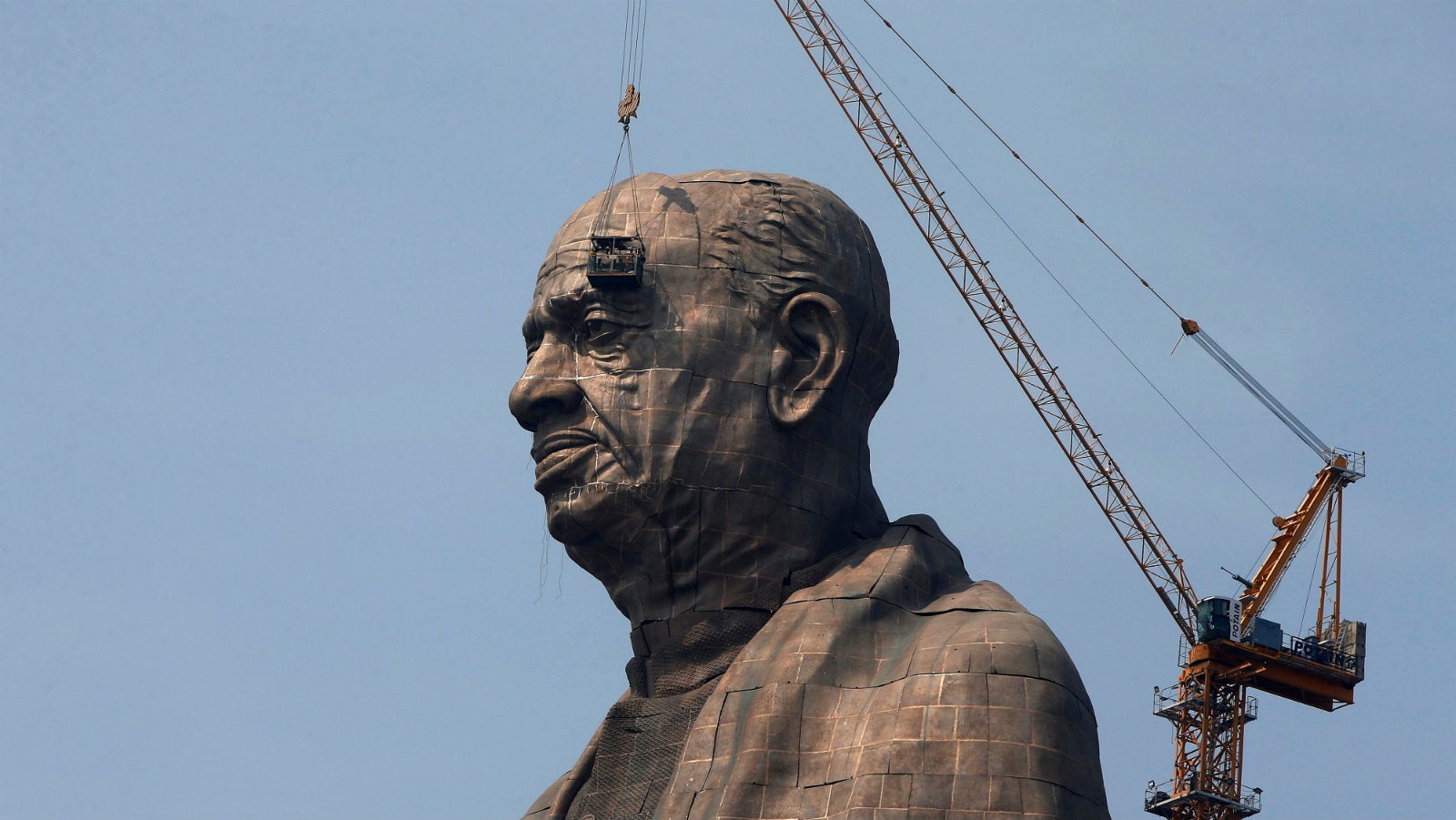India is unveiling the world’s tallest statue after years of controversy
India will today (Oct. 31) unveil the world’s tallest statue, that of Sardar Vallabhbhai Patel, a leading light of the country’s long freedom struggle against the British.


India will today (Oct. 31) unveil the world’s tallest statue, that of Sardar Vallabhbhai Patel, a leading light of the country’s long freedom struggle against the British.
Prime minister Narendra Modi will inaugurate the towering structure, located on an island along the Narmada river in the western state of Gujarat, on Patel’s 143rd birth anniversary.
At 182 metres (240 metres including the base), the “Statue of Unity” tops the Spring Temple Buddha (128 metres) in China that previously held the record for the world’s tallest statue. It’s also twice the size of the Statue of Liberty in New York. Built by the engineering and infrastructure firm Larsen & Toubro, using some components made in China, the statue required over 18,000 tonnes of reinforced steel and 1,700 tonnes of bronze.
Born in Nadiad, Gujarat, Patel was a lawyer-turned-politician of the Indian National Congress who worked closely with Mahatma Gandhi. Following Independence, he served as the country’s first deputy prime minister and home minister. He’s remembered the most as the “iron man” for forging a new nation, convincing 565 big and small princely states to integrate into it.
Over the years, despite belonging to the rival Bharatiya Janata Party, Modi has been effusive in his praise for the leader, even accusing past governments and parties of trying to “run down” and erase Patel’s legacy. The construction of the statue was a pet project of the prime minister, who laid its foundation on Oct. 31, 2013, as chief minister of Gujarat.
In the years since then, the enormous statue has been fraught with controversies.
The cost
The Statue of Unity was built at an estimated $430 million. Most of this money came from the government and public sector companies such as the Oil and Natural Gas Corporation and Hindustan Petroleum. Naturally, this sparked heavy criticism over the misuse of taxpayer money, which could have been put to better use in infrastructure development, education, and health care in a country that fares poorly on all these counts.

Of course, India is now no stranger to spending exorbitant amounts on enormous statues: In 2016, the government of the western state of Maharashtra earmarked over $500 million to build a giant statue of the 16th century chieftain, Shivaji Bhonsle, just off the Mumbai coast. Around 54,000 Indians then signed a petition against “wasting” the staggering amount of money. However, a few changes in the plan (notably the height of the statue) aside, the project is well on its way.
The local community
The Patel statue has also been heavily criticised by tribal communities living in the vicinity, who were displaced for the project. Around 1,500 people from a nearby village say they have lost their land and are yet to be compensated, the Mint newspaper had reported. Some 75,000 tribals have reportedly planned a mass protest on Oct. 31 against the inauguration.
Gujarat’s farmers are also unhappy, struggling as they are with drought and diminishing incomes. They are aghast at the government splurging on a statue instead of improving their access to freshwater.
The environmental impact
The location of the statue was chosen based on its proximity to the Sardar Sarovar dam, originally envisioned by Patel himself. Inaugurated by Modi last year, the dam itself was mired in controversy for decades as activists and tribal communities raised concerns over its ecological consequences and loss of land.
Activists also accused the government of embarking on the statue project without requisite environmental clearances or assessment. They argued that its construction violated the Environment Protection Act, 1986, and threatened the sensitive ecology and biodiversity of the area.
Nevertheless, the project continued unimpeded.